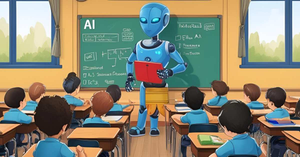Special education programs are designed to meet the unique needs of students with disabilities or learning challenges. These programs provide individualized support and instruction that can help students succeed academically, socially, and emotionally. Navigating the world of special education can be overwhelming for parents and guardians, especially when trying to understand the various services, rights, and resources available to ensure that their child receives the best possible education.
This guide will walk you through the basics of special education programs, including how to determine if your child qualifies, the types of services available, the creation of an Individualized Education Program (IEP), and how to advocate for your child’s educational needs.
Understanding Special Education
Special education is a tailored educational approach designed to address the individual differences and needs of students with disabilities. The goal is to provide children with disabilities the support they need to access the same educational opportunities as their peers. In the U.S., special education is governed by the Individuals with Disabilities Education Act (IDEA), a federal law that guarantees eligible children the right to a free and appropriate public education (FAPE) in the least restrictive environment (LRE).
Who is Eligible for Special Education?
To qualify for special education services under IDEA, a child must be evaluated and found to have one or more of the following disabilities:
- Autism spectrum disorder (ASD)
- Deafness or hearing impairment
- Developmental delay
- Emotional disturbance
- Intellectual disability
- Orthopedic impairment
- Other health impairments (e.g., ADHD)
- Specific learning disabilities (e.g., dyslexia, dysgraphia)
- Speech or language impairment
- Traumatic brain injury
- Visual impairment, including blindness
Eligibility is determined through a comprehensive evaluation conducted by professionals such as psychologists, educators, and specialists. If a child is found eligible, they are entitled to receive special education services tailored to their individual needs.
The Individualized Education Program (IEP)
The cornerstone of special education is the Individualized Education Program (IEP). An IEP is a legally binding document that outlines the specific services and support a child with a disability will receive in school. The IEP is created by a team that includes parents, teachers, special education professionals, and sometimes the child themselves, depending on their age and ability to participate.
Key Components of an IEP
An IEP typically includes the following components:
- Present levels of performance: A description of the child’s current academic and functional abilities.
- Measurable goals: Specific, measurable academic and behavioral goals the child is expected to achieve within the school year.
- Services and accommodations: A list of special education services, related services (e.g., speech therapy, occupational therapy), and accommodations (e.g., extra time on tests, seating arrangements) that will be provided to support the child’s learning.
- Participation in the general education curriculum: A plan for how the child will be included in the general education classroom or how much time they will spend in specialized settings.
- Progress monitoring: Methods for tracking and measuring the child’s progress toward their goals.
- Transition planning (for older students): Plans to help the child transition from school to post-school activities, such as vocational training, higher education, or employment.
IEPs are reviewed and updated annually, but parents can request a meeting at any time if they feel that changes are needed. The IEP ensures that the child receives the individualized support necessary to thrive academically.
Types of Special Education Services
Special education services can be delivered in various settings depending on the needs of the child. These services range from full inclusion in the general education classroom to more specialized or separate environments. Some of the common types of services include:
- Inclusion programs: In these settings, students with disabilities are taught alongside their non-disabled peers in the general education classroom. Special education teachers or aides may provide support within the classroom, such as modifying assignments or offering one-on-one help.
- Resource rooms: Students spend part of their day in a separate classroom, or resource room, where they receive specialized instruction tailored to their learning needs. The rest of the day is spent in the general education classroom.
- Self-contained classrooms: These are smaller, separate classrooms where students with more significant needs receive intensive instruction in a smaller group setting. Students may spend most or all of their day in this environment.
- Related services: These services support a child’s overall development and can include speech therapy, occupational therapy, physical therapy, counseling, and behavioral interventions. Related services are included in the IEP and are essential to helping the child access their education.
- Special schools: Some students may require placement in specialized schools that focus exclusively on teaching students with specific disabilities, such as schools for the deaf or schools for students with severe disabilities.
Each child’s placement is determined by their IEP team, and the goal is always to place the child in the least restrictive environment (LRE) where they can succeed.
The Special Education Process
Understanding the steps involved in the special education process can help parents and guardians advocate for their child’s needs more effectively. Here’s an overview of the key stages:
Referral for Evaluation
The process typically begins when a parent, teacher, or other professional suspects that a child has a disability that affects their ability to learn. The child is then referred for an evaluation to determine whether they qualify for special education services.
Comprehensive Evaluation
A team of professionals, including special education teachers, psychologists, and therapists, will conduct a comprehensive evaluation to assess the child’s abilities in various areas, such as academics, behavior, communication, and motor skills. This evaluation is used to determine whether the child has a disability and to guide the development of the IEP.
IEP Development
If the child is found eligible for special education, an IEP team is formed to develop the IEP. The team includes parents, teachers, special education staff, and sometimes the student. Together, they set academic and behavioral goals and decide what services and accommodations the child needs.
Implementation of the IEP
Once the IEP is finalized, the school implements the services and accommodations specified in the plan. The child’s progress toward their goals is regularly monitored and shared with parents.
Annual IEP Review
The IEP is reviewed at least once a year to assess the child’s progress and update goals as needed. However, parents can request an IEP meeting at any time if they feel that adjustments are necessary.
Reevaluation
Every three years, or more often if needed, the child will undergo a reevaluation to determine whether they still qualify for special education services and to assess any new or changing needs.
Rights and Protections for Parents and Students
Parents and students have certain rights and protections under IDEA to ensure that children with disabilities receive appropriate education. These rights include:
- The right to a free and appropriate public education (FAPE): Every child with a disability is entitled to an education that meets their unique needs at no cost to the family.
- The right to participate in decision-making: Parents are equal partners in the IEP process and have the right to be involved in all decisions regarding their child’s education.
- The right to evaluations: Parents have the right to request an independent educational evaluation (IEE) if they disagree with the results of the school’s evaluation.
- The right to dispute resolution: If parents disagree with the school’s decisions about their child’s education, they have the right to request mediation, file a complaint, or request a due process hearing to resolve disputes.
It’s important for parents to be informed about these rights and advocate for their child to ensure they receive the services they need.
How to Advocate for Your Child
Advocating for your child in the special education system can feel daunting, but by staying informed and involved, you can help ensure that your child receives the support they need. Here are some tips to effectively advocate for your child:
- Educate yourself: Learn as much as possible about your child’s disability, special education laws, and the services available in your school district. This knowledge will help you make informed decisions and communicate effectively with the IEP team.
- Keep detailed records: Maintain records of all evaluations, IEPs, progress reports, and communication with the school. These documents are important for tracking your child’s progress and advocating for any necessary changes.
- Be an active participant: Attend all IEP meetings, ask questions, and share your insights about your child’s strengths, challenges, and needs. Your input is invaluable in creating an effective IEP.
- Seek support: If you need help understanding the special education process or advocating for your child, consider reaching out to a special education advocate, joining a parent support group, or consulting with legal professionals who specialize in special education law.
Transitioning from School to Adulthood
For older students, special education services extend beyond academics to help prepare them for life after school. Transition services are an essential part of the IEP process for students aged 16 and older (in some states, as early as 14). These services are designed to help students transition to post-secondary education, employment, or independent living.
Transition services may include:
- Vocational training: Programs that help students gain job skills and explore career options.
- College preparation: Support with college applications, financial aid, and academic accommodations for higher education.
- Independent living skills: Training in life skills such as managing finances, using public transportation, and self-advocacy.
Transition planning is a collaborative effort involving the student, parents, educators, and outside agencies that provide adult services.
Conclusion
Special education programs are essential for providing students with disabilities the support they need to succeed in school and beyond. By understanding the special education process, being involved in the development of an IEP, and advocating for your child’s needs, you can help ensure that your child receives an appropriate and individualized education. Special education is not a one-size-fits-all approach—it’s about finding the right services and accommodations to help each child reach their full potential.









Be the first one to comment on this story.